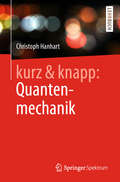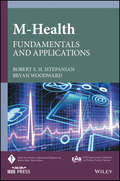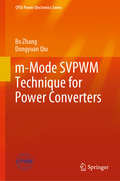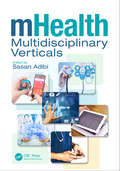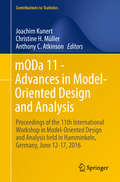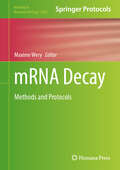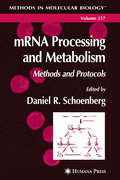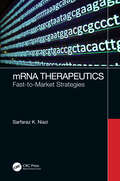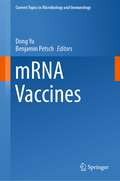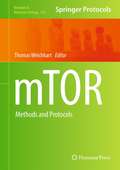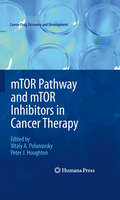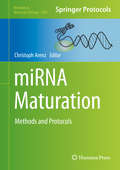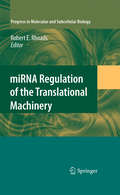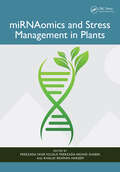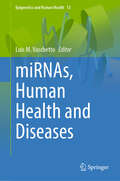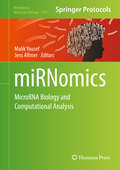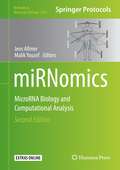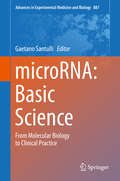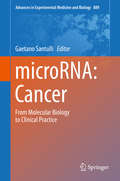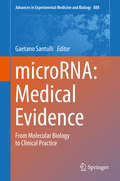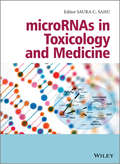- Table View
- List View
iScience: From Bacteria to Plants
by Juli Berwald Michelle Anderson John F. Bolzan Rachel Clark [et al.]"From Bacteria to Plants, the Life iScience Module provides students with accurate and comprehensive coverage of bacteria, protests, fungi, and plants. The strong content coverage integrates a wide range of hands-on experiences, critical-thinking opportunities, and real-world applications. The modular approach allows you to mix and match books to meet your curricula."
iWar: War and Peace in the Information Age
by Bill GertzNew York Times bestselling author and veteran Washington Times columnist explains how the United States can beat China, Russia, Iran, and ISIS in the coming information-technology wars.America is at war, but most of its citizens don’t know it. Covert information warfare is being waged by world powers, rogue states—such as Russia, China, Iran, and North Korea—and even terrorist groups like ISIS. This conflict has been designed to defeat and ultimately destroy the United States. This new type of warfare is part of the Information Age that has come to dominate our lives. In iWar, Bill Gertz describes how technology has completely revolutionized modern warfare, how the Obama administration failed to meet this challenge, and what we can and must do to catch up and triumph over this timely and important struggle.
iWoz: Computer Geek to Cult Icon
by Steve Wozniak Gina Smith"iWoz? traces the life and times of a brilliant, gifted... individual whose contributions to the scientific, business and cultural realms are extensive."--?Bookpage Before slim laptops that fit into briefcases, computers looked like strange, alien vending machines. But in "the most staggering burst of technical invention by a single person in high-tech history" (?BusinessWeek?) Steve Wozniak invented the first true personal computer. Wozniak teamed up with Steve Jobs, and Apple Computer was born, igniting the computer revolution and transforming the world. Here, thirty years later, the mischievous genius with the low profile treats readers to a rollicking, no-holds-barred account of his life--for once, in the voice of the wizard himself.
kurz & knapp: Das Wichtigste auf unter 150 Seiten
by Christoph HanhartIn diesem Buch wird Ihnen der Vorlesungsstoff zur Quantenmechanik 1 auf weniger als 150 Seiten präsentiert. Der Autor konzentriert sich dabei auf das Wesentliche: Er zeichnet einen klaren roten Faden, behandelt längere Rechnungen erst in Aufgaben zu den jeweiligen Kapiteln und verzichtet auf Historisches. Mit relativ kurzen und modular aufgebauten Kapiteln ist das Buch sowohl zum Nachschlagen als auch zum Selbststudium geeignet. Jedes Kapitel beginnt mit einem kurzen Überblick über das jeweilige Thema und zentralen Fragen, die im Hauptteil adressiert werden. Den Abschluss jedes Kapitels bilden Zusammenfassungen, die die Fragen vom Anfang wieder aufgreifen und in kompakter Form beantworten.
le Psychiatric Power Lectures at the Collège de France, 1973-1974
by Michel Foucault Graham Burchell Arnold I. Davidson Alessandro Fontana Jacques Lagrange Francois EwaldIn this new addition to the Coll#65533;ge de France Lecture Series Michel Foucault explores the birth of psychiatry, examining Western society's division of 'mad' and 'sane' and how medicine and law influenced these attitudes. This seminal new work by a leading thinker of the modern age opens new vistas within historical and philosophical study.
m-Health: Fundamentals and Applications
by Bryan Woodward Robert S. IstepanianThis book introduces the concept of m-Health, first coined by Robert S. H. Istepanian in 2003. The evolution of m-Health since then--how it was transformed from an academic concept to a global healthcare technology phenomenon--is discussed. Afterwards the authors describe in detail the basics of the three enabling scientific technological elements of m-Health (sensors, computing, and communications), and how each of these key ingredients has evolved and matured over the last decade. The book concludes with detailed discussion of the future of m-Health and presents future directions to potentially shape and transform healthcare services in the coming decades.
m-Mode SVPWM Technique for Power Converters (CPSS Power Electronics Series)
by Bo Zhang Dongyuan QiuThis book presents a novel control method for power converters, referred to as m-mode control. It provides an overview of traditional control methods for inverters – e.g. PWM and SVPWM – and the theory of the m-mode control method, while also discussing and applying m-mode control on various types of converters (including three-phase, nine-switch, five-leg and multi-level inverters, PWM rectifiers and modular multi-level converters). The book provides readers with sufficient background and understanding to delve deeper into the topic of SVPWM control. It is also a valuable guide for engineers and researchers whose work involves power converter control.
mHealth Multidisciplinary Verticals
by Sasan AdibiAn in-depth overview of the emerging concept; Mobile Health (mHealth), mHealth Multidisciplinary Verticals links applications and technologies to key market and vendor players. It also highlights interdependencies and synergies between various stakeholders which drive the research forces behind mHealth. The book explores the trends and directions w
mODa 11 - Advances in Model-Oriented Design and Analysis
by Anthony C. Atkinson Joachim Kunert Christine H. MüllerThis volume contains pioneering contributions to both the theory and practice of optimal experimental design. Topics include the optimality of designs in linear and nonlinear models, as well as designs for correlated observations and for sequential experimentation. There is an emphasis on applications to medicine, in particular, to the design of clinical trials. Scientists from Europe, the US, Asia, Australia and Africa contributed to this volume of papers from the 11th Workshop on Model Oriented Design and Analysis.
mRNA Decay: Methods and Protocols (Methods in Molecular Biology #2863)
by Maxime WeryThis detailed volume explores techniques for researching the diverse and specialized mechanisms for mRNA degradation, both in the cytoplasm and the nucleus. From classical methods for studying RNA degradation at the single RNA level to the latest transcriptome-wide approaches involving long-read sequencing and metabolic labeling, this book focuses on methods for eukaryotic models, such as procedures for studying deadenylation, decapping and exoribonuclease activity, assessing RNA decay rate, characterizing RNA degradation intermediates, RNA-proteins interactions, and more. Written for the highly successful Methods in Molecular Biology series, chapters include introductions to their respective topics, lists of the necessary materials and reagents, step-by-step and readily reproducible laboratory protocols, and tips on troubleshooting and avoiding known pitfalls. Authoritative and practical, mRNA Decay: Methods and Protocols provides both new and experienced RNA researchers with an inspiring collection of protocols to prompt further investigation of these vital degradation pathways.
mRNA Processing and Metabolism
by Daniel R. SchoenbergA collection of readily reproducible techniques for the study of mRNA processing and metabolism. These cutting-edge techniques range from cotranscriptional processing events that occur while the mNA is engaged with elongating RNA polymerase II, to in vivo and in vitro splicing and its biochemical analysis, and alternative splicing. Additional methods cover mRNA export, the recovery and analysis of mRNP complexes, cytoplasmic translation, mRNA degradation in vivo and in vitro, and the controversial concept of nuclear translation. Each proven protocol is described in step-by-step detail and contains a background introduction outlining the principle behind the technique, lists of equipment and reagents, and tips on troubleshooting and avoiding know pitfalls.
mRNA Therapeutics: Fast-to-Market Strategies
by Sarfaraz K. NiaziThis book is the most comprehensive and complete treatise on nucleic acid therapeuticproducts, including mRNA vaccines, their manufacturing, formulations, andtesting for safety and efficacy. Details include cGMP-compliant manufacturing andregulatory filing steps. A new concept of “biosimilar” mRNA vaccine is presentedto secure fast approval of copies of mRNA vaccines. Projections of financial plansto establish RNA manufacturing facilities are provided, along with details of supplychain management. Finally, the future of nucleic acid products in gene therapy andother newer applications is presented, along with a perspective that all new vaccineswill be the nucleic acid type that will further provide first-time prevention of autoimmunedisorders. It is projected that both big pharma and start-ups will enter this field,and we can expect significant additions to our drug armamentarium soon.
mRNA Vaccines (Current Topics in Microbiology and Immunology #440)
by Dong Yu Benjamin PetschThe formulation and the technological advancements in RNA biology, chemistry, stability, and encapsulated delivery systems that have enabled the development of fully synthetic mRNA vaccines are discussed in this volume. The applications of the mRNA technology is covered, focusing on infectious diseases but also touching on other indications, such as immunotherapies and molecular therapies. Potent and long-lasting immune responses observed in animal models, encouraging data from early human clinical studies, together with the success of two mRNA-based COVID-19 vaccines support the use of mRNA-based vaccination as an attractive alternative to conventional vaccine approaches. Consequently, the development progress of the technology, particularly on production, capabilities, and clinical development is reviewed. Topics on safety, regulatory issues, and possible challenges to the mRNA vaccination approach round off this book. Thanks to their high potency, the prospect for generic, low-cost manufacturing processes, and entirely synthetic nature, the future for mRNA vaccines is highly promising. Importantly, mRNA vaccines have the potential to minimize the time between pathogen identification and vaccine release with a huge impact on public health. As the mRNA-based vaccination technology has been progressing rapidly, the book is intended to be an end-to-end review series, covering everything from basic RNA biology and preclinical studies to the manufacturing strategy, clinical development and regulatory approval. It provides established RNA researchers and developers with updates on the latest advancements in the field and allows for a quick but comprehensive overview of this transformative technology, its application, and future potential.
mTOR
by Thomas WeichhartSince its discovery, the mammalian target of rapamycin (mTOR) has been shown to regulate many critical molecular processes in eukaryotes such as metabolism, growth, survival, aging, synaptic plasticity, memory, and immunity. In mTOR: Methods and Protocols expert researchers in the field detail many of the methods which are now commonly used to study mTOR. These include methods and techniques used for the study of the mTOR pathway and potential therapeutic applications of mTOR inhibitors such as, immunosuppressive and anticancer agents. Written in the highly successful Methods in Molecular BiologyTM series format, chapters include introductions to their respective topics, lists of the necessary materials and reagents, step-by-step, readily reproducible laboratory protocols, and key tips on troubleshooting and avoiding known pitfalls. Authoritative and practical, mTOR: Methods and Protocols seeks to aid scientists in the further study of this crucially important molecule ranging from the analysis of signal transduction events within a cell to the assessment of complex human diseases such as metabolic disorders or cancer.
mTOR Pathway and mTOR Inhibitors in Cancer Therapy
by Peter J. Houghton Vitaly A. PolunovskymTOR Pathway and mTOR Inhibitors in Cancer Therapy provides an up-to-date survey of the rapidly advancing field of cancer therapy. Our understanding of the mechanisms involved in cancer genesis and progression underwent unprecedented expansion during the last decade, opening a new era of cancer treatment – targeted therapy. The surge in this area results in no small part from studies conducted jointly by basic health scientists and clinical investigators. It is our hope that this book will help foster even further collaboration between investigators in these two disciplines. In this work, experts in TOR signaling have contributed in two thematic areas: mTOR Signaling and Cancer Therapy (chapters 1 - 8) and Therapeutic Targeting Downstream of mTOR (chapter 9 – 13). All chapters of mTOR Pathway and mTOR Inhibitors in Cancer Therapy are completely new or have been extensively updated by their authors; and we are indebted to all authors who have exemplified the links between these 2 thematic areas.
miRNA Maturation
by Christoph ArenzIn miRNA Maturation: Methods and Protocols, expert researchers in the field detail many of the methods which are now commonly used to study miRNA maturation. These included established methods such as fluorescent and non-fluorescent methods for homogenous assays of Dicer-mediated miRNA maturation or an in vivo assay for Drosha activity. Moreover, the volume also contains useful, but less-common methods that are hard to find elsewhere. Written in the highly successful Methods in Molecular Biology series format, chapters include introductions to their respective topics, lists of the necessary materials and reagents, step-by-step, readily reproducible laboratory protocols, and key tips on troubleshooting and avoiding known pitfalls. Authoritative and practical, miRNA Maturation: Methods and Protocols seeks to widen the view on miRNA as biological mediator and potential drug target.
miRNA Regulation of the Translational Machinery
by Robert E. RhoadsThe silencing of gene expression by small interfering RNAs has been recognized for only a relatively short time, but this has transformed our understanding of both transcriptional and post-transcriptional gene regulatory mechanisms. Multiple pathways culminate in formation of an RNA-induced silencing complex (RISC) containing a member of the Argonaute protein family bound to a 22-nt RNA strand that interacts with a target mRNA or gene through Watson-Crick base pairing. One consequence is mRNA-specific inhibition of protein synthesis. Evidence has been presented for diverse mechanisms, but there is not universal agreement in the field of how RISCs affect the translational machinery. The chapters collected in this volume represent contribution by leaders in the search to understand how miRNAs affect translation. They include chapters representing work in plants and Caenorhabditis elegans, the biological systems that originally led to the discovery of small interfering RNAs, but also include chapters on mammalian systems, with special emphasis on regulation of a key tumor suppressor and a protein that restricts human immunodeficiency virus 1 (HIV-1).
miRNAomics and Stress Management in Plants
by Khalid Rehman Hakeem Peerzada Arshid Shabir Peerzada Yasir YousufPlants, being sessile, are negatively affected by the biotic and abiotic (environmental) stresses, reducing plant growth, productivity, and quality to a larger extent. Plants have evolved different physiological, biochemical, and molecular mechanisms to combat these stress conditions to maintain their growth, development, and productivity. Understanding the mechanisms involved in the plant response to stress conditions is the foremost step in the development of stress-tolerant plants. One of the important adaptations to stress conditions is the precise and fine regulation of gene expression in both time and space. Although gene regulation occurs at different levels through different mechanisms, the most crucial is at the level of transcription. One of the important posttranscriptional gene regulatory mechanisms used by the plants to restore and maintain cellular homeostasis during the stress conditions are microRNAs.MicroRNAs, a group of approximately 22-nucleotide-long, non-coding RNAs, have recently been identified as a new class of regulators governing gene expression at the post-transcriptional level. MiRNAs can silence genes either by guiding the degradation of the target mRNAs or by repressing the mRNA translation. Plant miRNAs have been demonstrated to regulate many genes involved in various developmental processes, for example, auxin signaling, organ polarity/radial patterning, developmental transitions, and secondary metabolism regulation. Moreover, increasing evidence indicates the role of plant miRNA-guided gene regulation in response to biotic and abiotic stresses. High-throughput sequencing approaches have significantly elucidated the identification and functional characterization of numerous miRNAs in plants. Understanding the role and mechanism of action of miRNAs during abiotic and biotic stresses can potentially offer new approaches to improve plant growth and productivity.This unique book covers the different aspects of plant microRNAomics including the discovery, biogenesis, role in different stress conditions, and applications of microRNAs in developing stress-tolerant plants. Chapters cover the updated knowledge in the field of plant microRNA research. The book, miRNAomics and Stress Management in Plants, intends to demonstrate the breadth of research and the significant advances that have been made in understanding the role of miRNAs in the plant development and stress management.This comprehensive volume will be of value to plant physiologists, plant biochemists, geneticists, molecular biologists, agronomists, environmental researchers, and graduate and undergraduate students of plant science.
miRNAs, Human Health and Diseases (Epigenetics and Human Health #13)
by Luis M. VaschettoThis new volume of the book series Epigenetics and Human Health is dedicated to microRNAs (miRNAS), regulatory non-coding RNAs that have important roles in the control of gene expression both at posttranscriptional and transcriptional levels. Endogenous miRNAs regulate gene expression patterns in a sequence-specific manner. These short sequences may serve as potential therapeutic targets in the treatment of complex diseases including cancer, cardiovascular diseases, neurocognitive disorders, respiratory diseases and pathogenic infections. Moreover, miRNAs hold promise to be used as extensive diagnostic and prognostic markers of disease. miRNAs, Human Health and Disease is an essential reading for graduate and undergraduate students, researchers, and academics interested in the latest developments on non-coding RNA-mediated pathways associated with health and disease.
miRNomics: MicroRNA Biology and Computational Analysis
by Malik Yousef Jens AllmerIn miRNomics: MicroRNA Biology and Computational Analysis, expert researchers in the field present an overview of the current state of the art and aim to put the respective areas of research into a larger perspective. These include methods and techniques ranging from miRNA biogenesis, their biological function, computational analyses to their medical implications and applications. Written in the highly successful Methods in Molecular Biology series format, chapters include introductions to their respective topics, lists of the necessary materials and reagents, step-by-step, readily reproducible laboratory protocols, and key tips on troubleshooting and avoiding known pitfalls. Authoritative and practical, miRNomics: MicroRNA Biology and Computational Analysis seeks to aid scientists in the further study into miRNA research and statistics.
miRNomics: MicroRNA Biology and Computational Analysis (Methods in Molecular Biology #2257)
by Malik Yousef Jens AllmerThis second edition presents an up-to-date overview of the current state-of-the-art protocols and aims to miRNomics into a broader perspective. Chapters detail methods and techniques ranging from miRNA biogenesis, their biological function, computational analyses to their medical implications and applications. Written in the highly successful Methods in Molecular Biology series format, chapters include introductions to their respective topics, application details for both the expert and non-expert reader and tips on troubleshooting and avoiding known pitfalls. Authoritative and accessible, miRNomics: MicroRNA Biology and Computational Analysis, Second Edition ensures successful results in the further study of this vital field.
microRNA: Basic Science
by Gaetano SantulliThis volume explores microRNA pathophysiology, focusing on basic concepts in molecular and cellular biology. Chapters contributed by leading scientists examine recently discovered pathways in several processes, including aging, diabetes, cardiovascular disease, hematopoiesis, and mitochondrial fitness. The authors contextualize microRNAs within epigenetics and micropeptidomics, angiongenesis and atherosclerosis, endometrial pathophysiology, and more. Throughout, numerous color photographs, diagrams of molecular pathways, and tables enhance the text. microRNA: Basic Science is an ideal companion to both microRNA: Medical Evidenceand microRNA: Cancer. Taken together, these three books provide a state-of-the-art overview of this rapidly-expanding and fascinating field, from the molecular level to clinical practice. It will be invaluable to medical students, physicians, and researchers, as a complete and unique guide in the exploration of microRNA in basic science, cancer and clinical practice.
microRNA: Cancer
by Gaetano SantulliThis volume thoroughly explores of the functional role of microRNAs in cancer. It not only expertly describes the molecular mechanisms underlying the malignant transformation process but also compiles cutting-edge research on microRNAs in several forms of cancer, including colorectal cancer, pancreatic cancer, leukemia/lymphoma, prostate cancer, lung cancer, ovarian cancer, and bone cancer. Distinguished experts, currently working in prestigious institutions, elegantly discuss these fundamental themes. The text, which opens with a foreword by the renowned Dr. Carlo M. Croce, is enhanced by abundant color photographs, schemes, diagrams, and tables that fully support and complement the content. microRNA: Cancer is an ideal companion to both microRNA: Basic Science andmicroRNA: Medical Evidence. Taken together, these three books provide a state-of-the-art overview of this rapidly-expanding and fascinating field, from the molecular level to clinical practice. It will be invaluable to medical students, physicians, and researchers, as a complete and unique guide in the exploration of microRNA in basic science, cancer and clinical practice.
microRNA: Medical Evidence
by Gaetano SantulliThis volume explores microRNA function in a wide array of human disorders, providing a clinical basis for precision medicine and personalized therapies using these molecules. The twenty-one chapters, all authored by internationally-renowned experts, open with an introduction contextualizing microRNA manipulation within today's initiatives towards precision medicine. The following chapters explore the clinical role of microRNAs in the diagnosis and treatment of metabolic and cardiovascular disorders, focusing on mitochondrial fitness, arterial hypertension, cardiovascular remodeling, cerebrovascular disease, pulmonary hypertension, diabetic kidney disease, and kidney transplantation. The subsequent chapters discuss the importance of microRNAs in the wound healing process and in skin disease, in the pathogenesis of allergy, in human ovulation, and in infection. The book concludes with chapters which outline the emerging role of microRNAS in doping and detail microRNA profiling. microRNA: Medical Evidence is an ideal companion to both microRNA: Basic Scienceand microRNA: Cancer. Taken together, these three books provide a state-of-the-art overview of this rapidly-expanding and fascinating field, from the molecular level to clinical practice. It will be invaluable to medical students, physicians, and researchers, as a complete and unique guide in the exploration of microRNA in basic science, cancer and clinical practice.
microRNAs in Toxicology and Medicine
by Saura C. SahuDuring the past decade it has become evident that microRNAs regulate gene expressions and control many developmental and cellular processes in eukaryotic organisms. Recent studies suggest that microRNAs play an important role in toxicogenomics and are likely to play an important role in a range of human diseases including cancer. microRNAs in Toxicology and Medicine is a comprehensive and authoritative compilation of up-to-date developments in this emerging research area, presented by internationally recognized investigators. It focuses on the role of microRNA in biology and medicine with a special emphasis on toxicology. Divided into six parts, topics covered include:microRNA and toxicology - including environmental toxicants and perturbation of miRNA signaling; microRNA, and Disease States featuring microRNAs in drug-induced liver toxicity, microRNAs and Inflammation the regulatory role of microRNA in mutagenesis, microRNAs and cancer, and the role of microRNAs in tumor progression and therapy, as well as current understanding of microRNAs as therapeutic targets in cancermicroRNAs and disease statesmicroRNAs and stem cellsmicroRNAs and genomicsmicroRNAs and epigenomicsmicroRNAs and biomarkers - including body fluid microRNAs as toxicological biomarkers, cell-free microRNAs as biomarkers in human diseases, and circulating microRNAs as biomarkers of drug-induced pancreatitismicroRNAs in Toxicology and Medicine is an essential insight into the current trends and future directions of research in this rapidly expanding field for investigators, toxicologists, risk assessors, and regulators in academia, medical settings, industry, and government.



